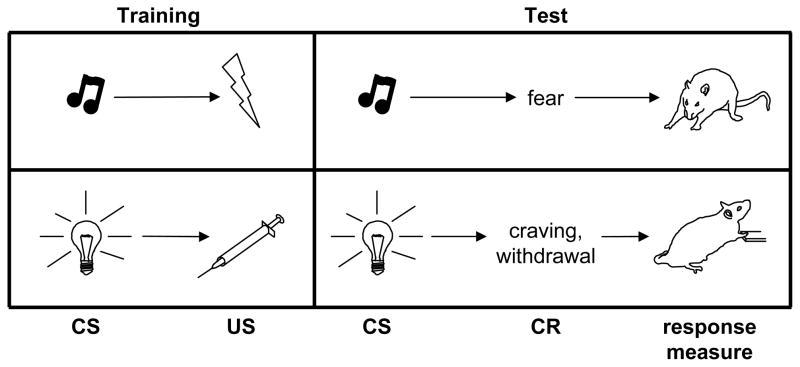Figure 2.
Simplified depiction of how conditioning contributes to the development and maintenance of fear- and addiction-related behaviors. A Pavlovian conditioned stimulus (CS) is a cue that signals impending delivery of an innately appetitive or aversive unconditioned stimulus (US). In the fear conditioning paradigm, a CS such as a tone is paired with a US such as foot shock. After training, the tone elicits a conditioned response (CR), fear, which can be defined operationally in rodents as freezing (cessation of all bodily movements except those required for respiration). In an analogous manner, a CS such as a light that is paired with administration of a drug such as morphine (US) acquires the ability to elicit drug craving and withdrawal CRs, which can be defined operationally as drug-seeking behavior (e.g., pressing a lever for delivery of morphine).

